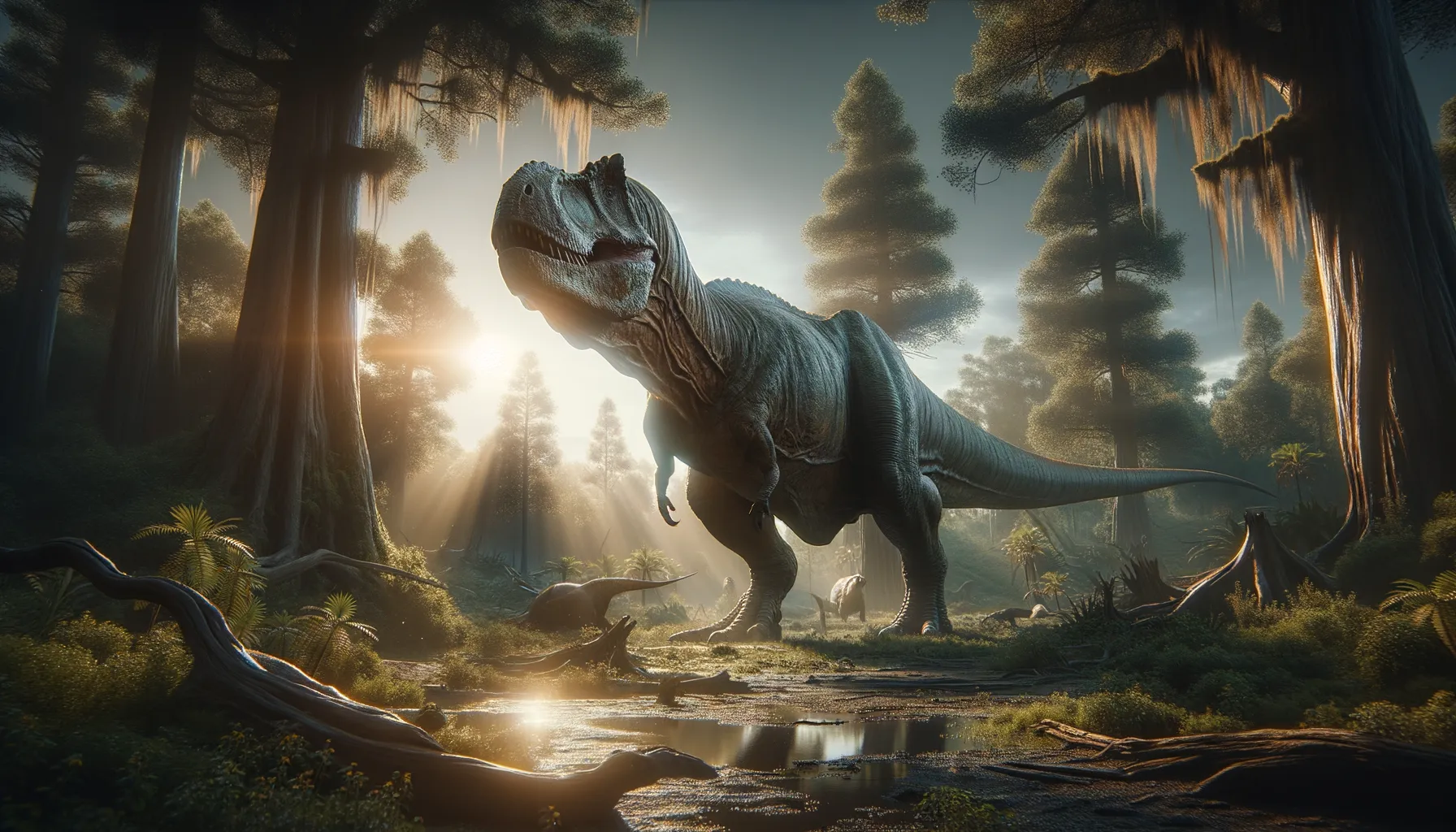
Delapparentia
A gentle giant of the ancient world.
Period
Cretaceous
Length
Measured about 10 meters in length.
Height
Stood approximately 4 meters tall.
Weight
Weighed around 3 to 4 tons.
Delapparentia was a large, plant-eating dinosaur that roamed the Earth during the Early Cretaceous period. This dinosaur is primarily known from fossils found in what is now modern-day Spain. Its massive body and long tail suggest it was well adapted to a life of constant grazing. Although not much is known about its exact lifestyle, Delapparentia provides valuable insights into the diverse ecosystem of its time.
Diet
Delapparentia was herbivorous, feeding primarily on the lush vegetation of its environment. It likely foraged for ferns, cycads, and other low-growing plants. Its diet would have required constant feeding to sustain its large body.
Hunting
As a herbivore, Delapparentia did not engage in hunting. It relied on a broad and sturdy beak to strip leaves and plants for consumption. Its size may have deterred some predators from attacking.
Environmental challenges
Delapparentia likely faced the challenge of fluctuating climates that influenced plant growth. Limited food resources would have been a constant concern for such a large herbivore. Predators of the time also posed a significant threat to individuals, especially the young.
Speed
Believed to be relatively slow-moving.
Lifespan
Estimated to live up to several decades.
First discovery
Discovered in Spain in the early 1950s.
Fun Facts
- Delapparentia was a dinosaur that lived during the Early Cretaceous period, roughly 129-125 million years ago.
- It was named after the French paleontologist Albert-Félix de Lapparent, who made significant contributions to the field.
- Delapparentia was discovered in Spain, making it a part of the rich dinosaur history found in the Iberian Peninsula.
- This dinosaur is believed to have been a herbivore, meaning it primarily ate plants.
- Delapparentia likely moved on four legs, similar to many other large herbivorous dinosaurs.
- The fossil remains of Delapparentia were not entirely complete, which leaves some aspects of its appearance and behavior open to interpretation.
- Its bones showed signs of being strong and robust, suggesting it might have been a large and powerful dinosaur.
Growth and Development
Delapparentia is thought to have grown steadily over its lifespan, reaching full size after several years. Juveniles might have had different dietary needs compared to adults, focusing initially on softer vegetation. The growth rings in bones suggest periods of rapid and slow growth, perhaps in response to environmental conditions.
Habitat
Delapparentia inhabited areas with plentiful vegetation, such as floodplains and forested regions. These environments provided the necessary food and cover from predators. Its habitat was likely influenced by its migratory patterns in search of food and water.
Interaction with other species
Delapparentia likely coexisted with a variety of other herbivorous and carnivorous dinosaurs. It may have formed herds for protection against predators. Interaction with other species would have included competition for food resources.
Natural lifespan
Delapparentia likely lived for several decades under natural conditions.
Reproduction
Delapparentia is presumed to have laid eggs, like other dinosaurs of its kind. Nests would have been built in sheltered areas to protect the eggs from predators. Parental care may have involved guarding the nest from threats.
Social behaviour
Delapparentia may have lived in groups, providing safety in numbers. Herd behavior would have been crucial in protecting young dinosaurs from predators. Social dynamics within groups could have included hierarchies based on size and strength.
Fossil locations
Fossils of Delapparentia have predominantly been found in Northern Spain. The location of these fossils has provided insights into the geology and paleoclimate of the region during the Early Cretaceous. Ongoing excavations in these areas continue to uncover more about this intriguing dinosaur.
